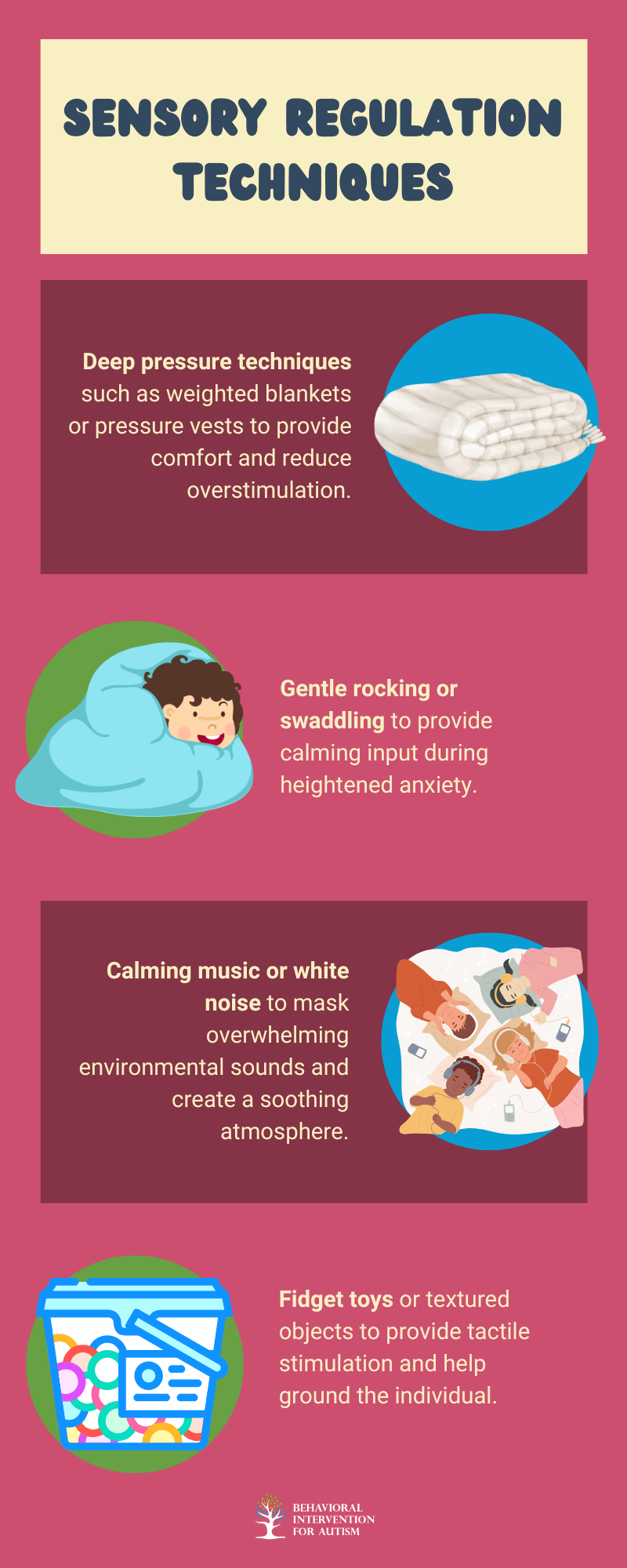
Table of Contents
Anxiety is a common and often overwhelming experience for individuals on the autism spectrum. Due to the heightened sensitivity to sensory input, social situations, and changes in routine, individuals with autism may be more prone to anxiety attacks. Understanding how to identify, prevent, and manage anxiety attacks can be critical to improving the quality of life for those affected. This guide explores the causes of anxiety attacks in individuals with autism, as well as strategies for managing and alleviating these distressing experiences.
What Are Anxiety Attacks in Individuals with Autism?
Anxiety attacks, also termed panic attacks, are characterized by unexpected surges of intense fear or discomfort. These attacks can lead to a range of physical and emotional symptoms, including rapid heartbeat, sweating, shortness of breath, dizziness, and feelings of impending doom. For individuals with autism, anxiety attacks can be triggered by a variety of factors, such as difficulty in communication, sensory overload, social stressors, or changes in routine.
Understanding the signs of an anxiety attack is the first step in helping individuals with autism manage these episodes. While the symptoms can vary, common indicators of anxiety attacks in individuals with autism include:
- Increased agitation or restlessness
- Repetitive behaviors such as hand-flapping or rocking
- Verbal outbursts or crying
- Avoidance of social situations or withdrawal
- Physical manifestations such as tense muscles or sweating
Being able to recognize the early warning signs of an anxiety attack is key in preventing escalation and providing timely support.

Causes of Anxiety in Individuals with Autism
There are several unique challenges faced by individuals with autism that can contribute to heightened levels of anxiety. These challenges include:
Sensory Sensitivities
Many individuals with autism experience heightened sensitivity to sensory input, such as loud noises, bright lights, or certain textures. These sensory sensitivities can lead to overwhelming feelings of discomfort, triggering anxiety attacks. The intensity of the sensory experiences may be difficult for those on the autism spectrum to regulate, leading to an anxious response when overstimulated.
Difficulty with Communication
For individuals who have limited verbal communication skills, anxiety can arise when they struggle to express their needs, desires, or discomforts. This communication gap can be incredibly frustrating, causing anxiety or behavioral outbursts as a form of expressing their distress.
Social Situations
Social anxiety is another common trigger for individuals with autism and can often be part of a dual diagnosis disorder. Difficulties understanding social cues, maintaining eye contact, or navigating complex social interactions can result in heightened stress and anxiety. Social events or gatherings that require interaction with unfamiliar people may trigger a panic attack due to fear of social judgment or not meeting expectations.
Change in Routine
Many individuals with autism thrive on routine and predictability. Any unexpected change, such as a shift in daily activities or a disruption in the environment, can provoke a sense of instability, leading to feelings of anxiety. This need for structure makes transitions difficult and may lead to anxiety attacks during moments of change or uncertainty.
Overstimulation or Environmental Factors
Certain environments, especially those with high noise levels or crowded spaces, may trigger anxiety in individuals with autism. Overstimulation from external factors, such as crowds, unfamiliar environments, or heightened noise, can overwhelm the nervous system and lead to panic attacks.
Strategies for Managing Anxiety Attacks in Individuals with Autism
While anxiety attacks can be challenging, several strategies can help individuals with autism manage anxiety and reduce the frequency and intensity of these episodes. These strategies may involve a combination of sensory regulation, communication support, behavior management techniques, and professional intervention.
1. Creating a Calm and Predictable Environment
Providing a calm, structured environment is crucial for reducing anxiety in individuals with autism. Establishing a predictable routine and minimizing unexpected changes can help individuals feel safe and secure. Additionally, creating a sensory-friendly space can reduce sensory overload and provide a retreat for calming down during moments of distress.
For example, consider setting up a designated quiet room with soft lighting, noise-canceling headphones, or calming sensory tools. This safe space can allow the individual to retreat and self-regulate during stressful situations.
2. Sensory Regulation Techniques
Given that sensory sensitivities are a significant contributor to anxiety in individuals with autism, sensory regulation strategies can be effective in reducing anxiety. These strategies might include:

Implementing sensory regulation strategies during times of anxiety can promote relaxation and comfort, helping to de-escalate anxiety attacks before they worsen.
3. Communication Support
Since many individuals with autism may have difficulty expressing themselves verbally, it’s essential to use alternative communication methods to help them express their needs and feelings. Some communication support strategies include:
- Picture exchange systems or communication boards that allow individuals to point to images or symbols to express their emotions or desires.
- Sign language or other augmentative communication methods, such as speech-generating devices, to support verbal communication.
- Visual schedules to provide a clear representation of daily routines and reduce anxiety associated with uncertainty or change.
By providing individuals with tools to communicate their feelings or needs, they may experience less frustration and anxiety during stressful situations.
4. Behavioral Interventions and Coping Strategies
Behavioral interventions are a cornerstone of autism support, and they can also play a crucial role in managing anxiety. Some strategies that may be effective include:
- Cognitive-behavioral therapy (CBT) tailored for individuals with autism, which focuses on identifying and challenging anxious thoughts and replacing them with more positive, rational thoughts.
- Relaxation techniques such as deep breathing exercises or progressive muscle relaxation to calm the body and mind during moments of anxiety.
- Distraction techniques that involve redirecting the individual’s focus onto a preferred activity or interest, which can help alleviate feelings of anxiety.
- Mindfulness practices that encourage individuals to be present in the moment and regulate their emotional responses to stress.
It’s important to work with trained professionals who can tailor these interventions to the individual’s specific needs, ensuring they are both effective and accessible.

When to Seek Professional Help
Managing anxiety in individuals with autism often involves a mix of at-home strategies and professional support. If anxiety becomes frequent or unmanageable, consulting a healthcare provider or mental health professional is essential. Therapists experienced in autism can offer targeted interventions such as cognitive behavioral therapy (CBT), sensory therapies, or medication when necessary, tailoring the approach to enhance quality of life.
For persistent or severe anxiety, a formal assessment can identify underlying factors like sensory processing issues or co-occurring conditions, guiding effective treatment. Medications, including SSRIs or anti-anxiety options, may be recommended alongside behavioral therapies, but they should always be prescribed and monitored by a healthcare professional. With the right combination of strategies, including a calm environment and tailored interventions, anxiety in individuals with autism can be effectively managed, improving their overall well-being.
Find Support for Managing Autism and Anxiety
Dealing with anxiety attacks alongside autism can be overwhelming, but the right support can make all the difference. Behavioral Intervention For Autism provides exceptional ABA therapy in Florida, designed to address the unique challenges faced by individuals with autism. Our team takes a compassionate and personalized approach, ensuring that each therapy plan is tailored to your specific needs. We’re here to help you navigate these challenges and create a path toward greater calm and confidence. Reach out to us today to explore how our services can support you or your loved one.
- 9 Common Obsessions of Children With Autism You Should Know - February 25, 2025
- What is Neurodiversity? A Guide to Embracing Differences - February 25, 2025
- Understanding Hyperfocus in Autism: What It Means and Why It Happens - February 25, 2025
